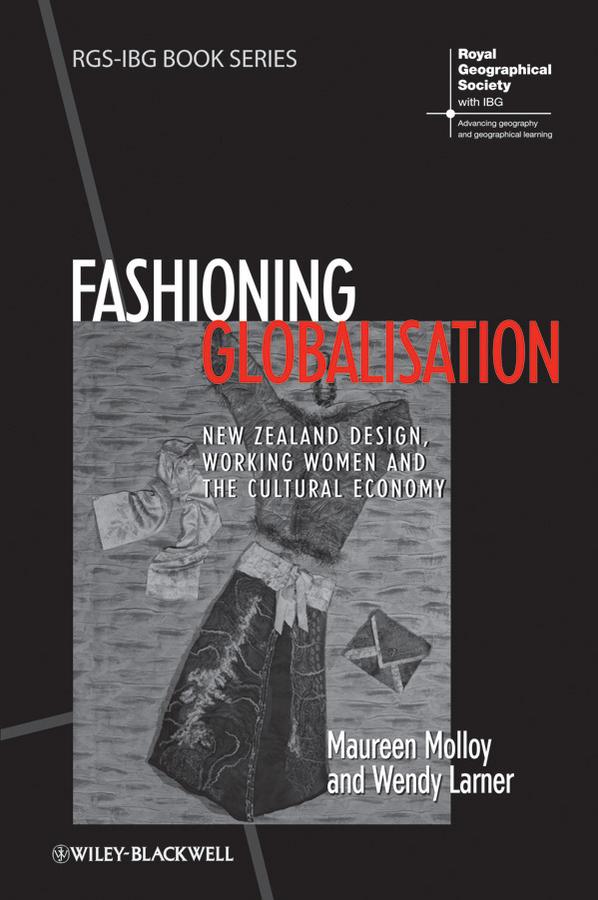Bücher versandkostenfrei*100 Tage RückgaberechtAbholung in der Wunschfiliale
NEU: Das Hugendubel Hörbuch Abo - jederzeit, überall, für nur 7,95 € monatlich!
Jetzt entdecken
mehr erfahren
Zustellung: Do, 16.10. - Mi, 22.10.
Versand in 3-4 Wochen
VersandkostenfreiBestellen & in Filiale abholen:
There have been endless studies mapping the iniquities of globalised capital, especially the employment practices of the garment industry in the Third World. Yet even as women (and others) in outsourced sweat shops suffer a form of modern-day bondage, women in developed nations are carving out new careers in the fashion industry as mid-level entrepreneurial designers. Operating between the spectacular pleonasms of haute couture and ubiquitous 'designer diffusion' lines such as DKNY, these artisans of 'high casual' fashion evince a number of features of late capitalism, such as 'creative cities', cultural mediation and 'work-style' businesses that are distinctively gendered. At the heart of this volume, which focuses in depth on the dynamics of independent fashion design in New Zealand, lies the assertion that there exist as-yet untraced links between the entry of first world women into paid employment, and the wider processes of globalisation. This revealing study of New Zealand fashion demonstrates that economic globalisation, the movement of middle-class women into the labour force, and the changing structure of the fashion industry are not only coterminous but intrinsically connected.
Inhaltsverzeichnis
List of Figures and Credits ix
Preface xi
Series Editors' Preface xiv
Acknowledgements xv
1 What We Saw and Why We Started this Project 1
2 Global Aspirations: Theorising the New Zealand Designer Fashion Industry 19
3 Policy for a New Economy: 'After Neoliberalism' and the Designer Fashion Industry 43
with Richard Le Heron and Nick Lewis
4 Cultivating Urbanity: Fashion in a Not-so-global City 69
with Alison Goodrum
5 Gendering the 'Virtuous Circle': Production, Mediation and Consumption in the Cultural Economy 99
6 Creating Global Subjects: The Pedagogy of Fashionability 125
7 Lifestyle or Workstyle? Female Entrepreneurs in New Zealand Designer Fashion 153
8 Conclusion: An Unlikely Success Story? 179
Index 191
Preface xi
Series Editors' Preface xiv
Acknowledgements xv
1 What We Saw and Why We Started this Project 1
2 Global Aspirations: Theorising the New Zealand Designer Fashion Industry 19
3 Policy for a New Economy: 'After Neoliberalism' and the Designer Fashion Industry 43
with Richard Le Heron and Nick Lewis
4 Cultivating Urbanity: Fashion in a Not-so-global City 69
with Alison Goodrum
5 Gendering the 'Virtuous Circle': Production, Mediation and Consumption in the Cultural Economy 99
6 Creating Global Subjects: The Pedagogy of Fashionability 125
7 Lifestyle or Workstyle? Female Entrepreneurs in New Zealand Designer Fashion 153
8 Conclusion: An Unlikely Success Story? 179
Index 191
Mehr aus dieser Reihe
Produktdetails
Erscheinungsdatum
19. August 2013
Sprache
englisch
Seitenanzahl
216
Reihe
RGS-IBG Book Series
Autor/Autorin
Maureen Molloy, Wendy Larner
Verlag/Hersteller
Produktart
gebunden
Gewicht
408 g
Größe (L/B/H)
231/157/15 mm
ISBN
9781444337013
Entdecken Sie mehr
Bewertungen
0 Bewertungen
Es wurden noch keine Bewertungen abgegeben. Schreiben Sie die erste Bewertung zu "Fashioning Globalisation" und helfen Sie damit anderen bei der Kaufentscheidung.
































